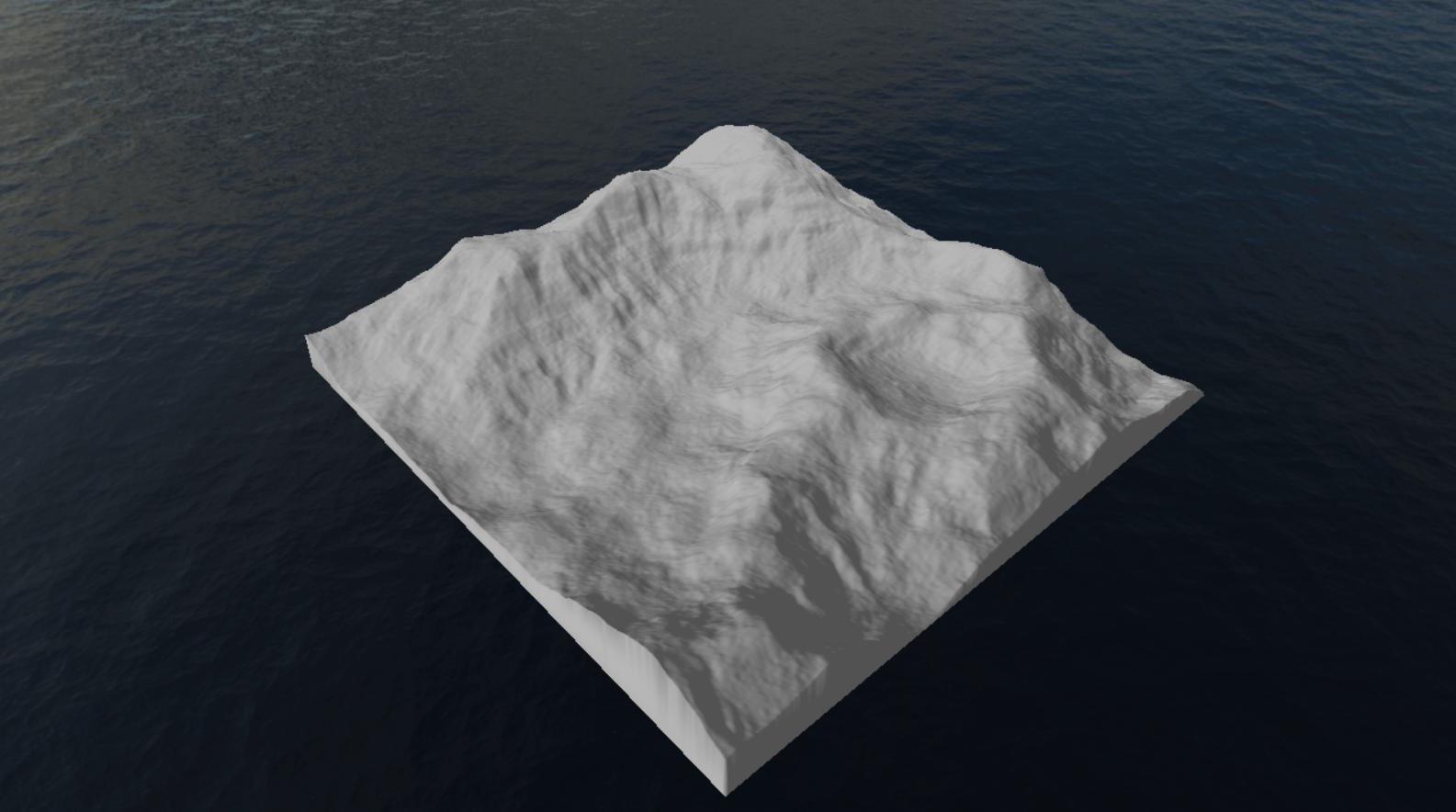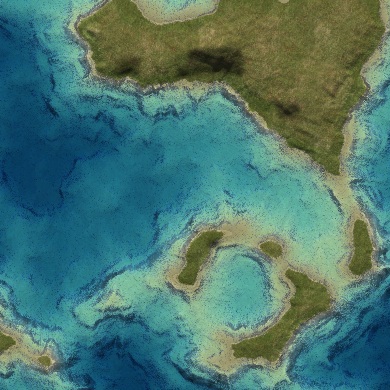I am currently building a height map terrain generator using OpenGL. It's a simple program that loads a height map image, iterates over the image data and generates vertices, indices and normals. At its current state it can render a height map with a single colour based on the normals.
My problem is generating correct UV coordinates for the diffuse map. It just comes out wrong:
This is the diffuse map I am trying to load:
Here is what I currently have:
Generate Vertices, Normals and Indices
// Generate Vertices and texture coordinates
for (int row = 0; row <= this->imageHeight; row++)
{
for (int column = 0; column <= this->imageWidth; column++)
{
float x = (float)column / (float)this->imageWidth;
float y = (float)row / (float)this->imageHeight;
float pixel = this->imageData[this->imageWidth * row + column];
float z;
if (row == this->imageHeight || column == this->imageWidth || row == 0 || column == 0)
{
z = 0.0f;
}
else
{
z = float(pixel / 256.0)*this->scale;
}
MeshV3 mesh;
mesh.position = glm::vec3(x, y, z);
mesh.normal = glm::vec3(0.0, 0.0, 0.0);
mesh.texture = glm::vec2(x, y);
this->mesh.push_back(mesh);
}
}
// Generate indices
for (int row = 0; row < this->imageHeight; row++)
{
for (int column = 0; column < this->imageWidth; column++)
{
int row1 = row * (this->imageWidth + 1);
int row2 = (row + 1) * (this->imageWidth + 1);
// triangle 1
this->indices.push_back(glm::uvec3(row1 + column, row1 + column + 1, row2 + column + 1));
// triangle 2
this->indices.push_back(glm::uvec3(row1 + column, row2 + column + 1, row2 + column));
}
}
// Generate normals
for (int i = 0; i < this->indices.size(); i++)
{
glm::vec3 v1 = this->mesh[this->indices[i].x].position;
glm::vec3 v2 = this->mesh[this->indices[i].y].position;
glm::vec3 v3 = this->mesh[this->indices[i].z].position;
glm::vec3 edge1 = v1 - v2;
glm::vec3 edge2 = v1 - v3;
glm::vec3 normal = glm::normalize(glm::cross(edge1, edge2));
this->mesh[this->indices[i].x].normal += normal;
this->mesh[this->indices[i].y].normal += normal;
this->mesh[this->indices[i].z].normal += normal;
}
I load the diffuse map with the following method
void Terrein::getDIffuseMap()
{
glGenTextures(1, &this->texture);
glBindTexture(GL_TEXTURE_2D, this->texture); // all upcoming GL_TEXTURE_2D operations now have effect on this texture object
glTexParameteri(GL_TEXTURE_2D, GL_TEXTURE_WRAP_S, GL_CLAMP_TO_EDGE);
glTexParameteri(GL_TEXTURE_2D, GL_TEXTURE_WRAP_T, GL_CLAMP_TO_EDGE);
glTexParameteri(GL_TEXTURE_2D, GL_TEXTURE_MIN_FILTER, GL_NEAREST);
glTexParameteri(GL_TEXTURE_2D, GL_TEXTURE_MAG_FILTER, GL_NEAREST);
int width, height, nrChannels;
std::string path = "assets/diffuse.jpg";
this->diffuseData = stbi_load(path.c_str(), &width, &height, &nrChannels, 0);
if (this->diffuseData)
{
glTexImage2D(GL_TEXTURE_2D, 0, GL_RGB, width, height, 0, GL_RGB, GL_UNSIGNED_BYTE, this->diffuseData);
glGenerateMipmap(GL_TEXTURE_2D);
}
else
{
std::cout << "Failed to load diffuse texture" << std::endl;
}
}
I can't seem to figure out what might be wrong here. Is there an issue with how I am loading the image? Or am I not calculating the texture coordinates coorectly? Please let me know if there is anything else I should provide. I have been stuck at this for a few days now. Thanks!




float pixelprobably accesses outside the bounds ofimageData. Sincepixelis only used in theelsepart of the followingif, movepixelinto the body of theelse. – Strunk